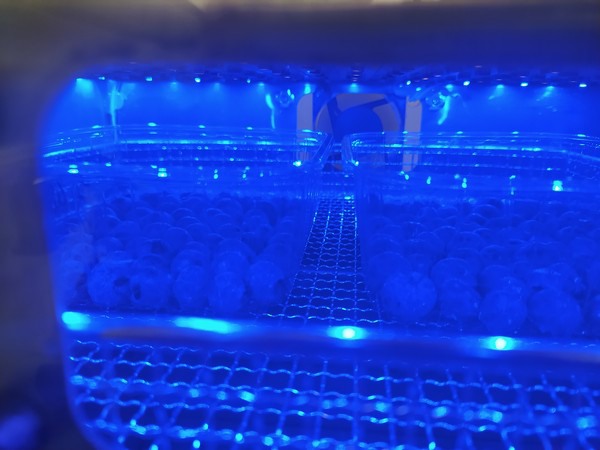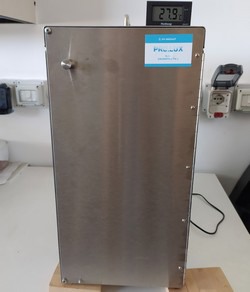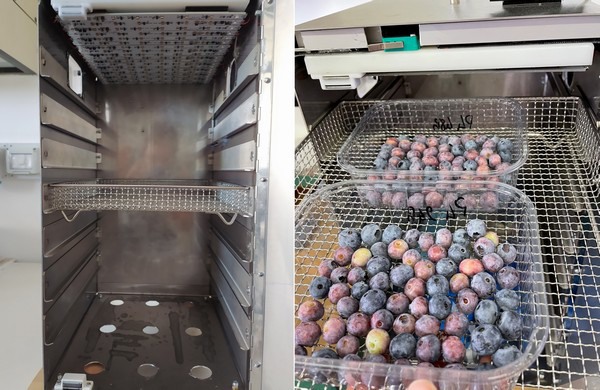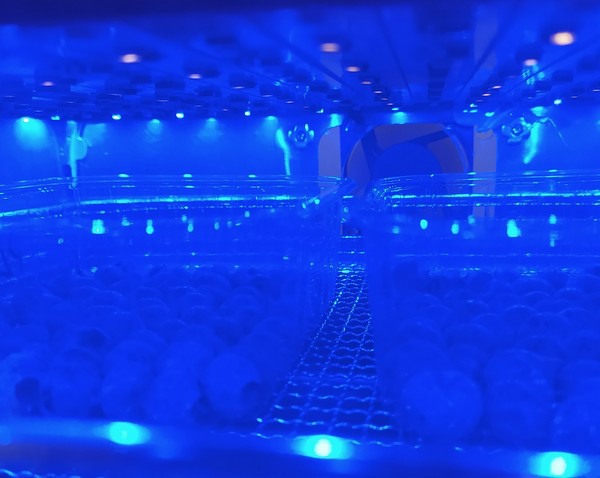Blueberry production and consumption continue to increase globally, despite unfavorable weather conditions in some countries and rising production costs recorded around the world. There is strong demand, in particular, for the giant American blueberry.
Given the high demand for this fruit, there is a clear need, from an economic point of view, to optimize its harvesting and storage. The blueberry, in fact, has some difficulties in managing the post-harvest supply chain, which all too frequently leads to poor quality. Among these is the difficulty in detaching at the right degree of ripeness, which should take place when the berry is fully turned, whereas the insertion zone of the stalk may still have a pinkish coloration.
"The tendency to harvest the fruit prematurely causes batches of goods with non-uniform coloration, with possible retrogradation during the storage period, due to a decrease in bioactive components such as anthocyanins and polyphenols," said Professor Giovanna Giacalone of the Department of Agricultural, Forestry and Food Sciences (Disafa) at the University of Turin. "The presence of molds and yeasts, naturally present on the surface of the fruit, is then a further cause of blueberry decay during storage.

Blueberry irradiation in the UV Test Box (photo provided by Giovanna Giacalone)
In view of the above, with the aim of solving the highlighted problems, Disafa, in collaboration with Pro.Lux and Move2Web, companies from Piedmont specializing in the field of UV-C led lamps, is studying a new post-harvest treatment. Specifically, researchers are evaluating the possibility of using UV-B and UV-C radiation to irradiate blueberries prior to cold storage and stimulate the production of polyphenolic components.
As a result of a collaboration agreement with Disafa, it was agreed that Pro.Lux and Move2Web would be willing to build a prototype UV Test Box (pictured opposite, provided by Giovanna Giacalone) aimed at testing the effects of UV-B and UV-C radiation on giant American blueberries.
that Pro.Lux and Move2Web would be willing to build a prototype UV Test Box (pictured opposite, provided by Giovanna Giacalone) aimed at testing the effects of UV-B and UV-C radiation on giant American blueberries.
"The intended goal is to bring to the market a visually uniform product with superior organoleptic qualities found in the improvement of the nutraceutical characteristics of the fruit. At the same time, UV treatment will reduce the microbial load, promoting a better shelf life," explained Giacalone. "Thanks to the UV Test Box provided by Pro.Lux, the experimentation has begun in order to outline an operational method applicable to small fruit packaging lines.
As Prof. Giacalone explained to FreshPlaza, "The box is experimental and the purpose is not to treat a lot of product at a time, but to verify if the treatment works and, if so, to transfer the methodology to blueberry processing lines. At each trial we treat about 500 g of product, which is placed directly on the grid with which the box is equipped."
 UV Test Box (photos provided by Giovanna Giacalone)
UV Test Box (photos provided by Giovanna Giacalone)
"The irradiation is only from above, so the blueberries have to be arranged to generate a single layer, which is what happens in the processing lines as well. Right now, the trial is testing different irradiation powers and treatment durations. It is also evaluating how much of the processed product should subsequently be conditioned at room temperature, so that polyphenol synthesis processes are stimulated."
 Blueberry irradiation in the UV Test Box (photo provided by Giovanna Giacalone)
Blueberry irradiation in the UV Test Box (photo provided by Giovanna Giacalone)
"Promising results, in terms of increased polyphenol and total anthocyanin content, were obtained with treatments between 10 and 25 minutes and with adaptation times of about 24 hours, but we are also evaluating shorter times. We used an irradiation power of about 1800 µW/cm2 and doses between 600-3200 mJ/cm2 depending on the duration of the treatment," concluded Giacalone.
For more information:
Giovanna Giacalone
DISAFA
giovanna.giacalone@unito.it
Fulvio Nepote
Move2Web srl
fulvio.nepote@move2web.it
Pro.Lux srl
pro.lux@legalmail.it
